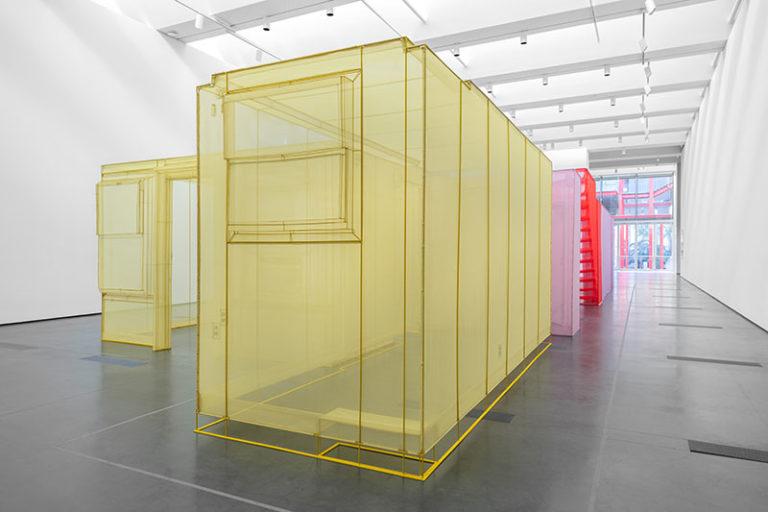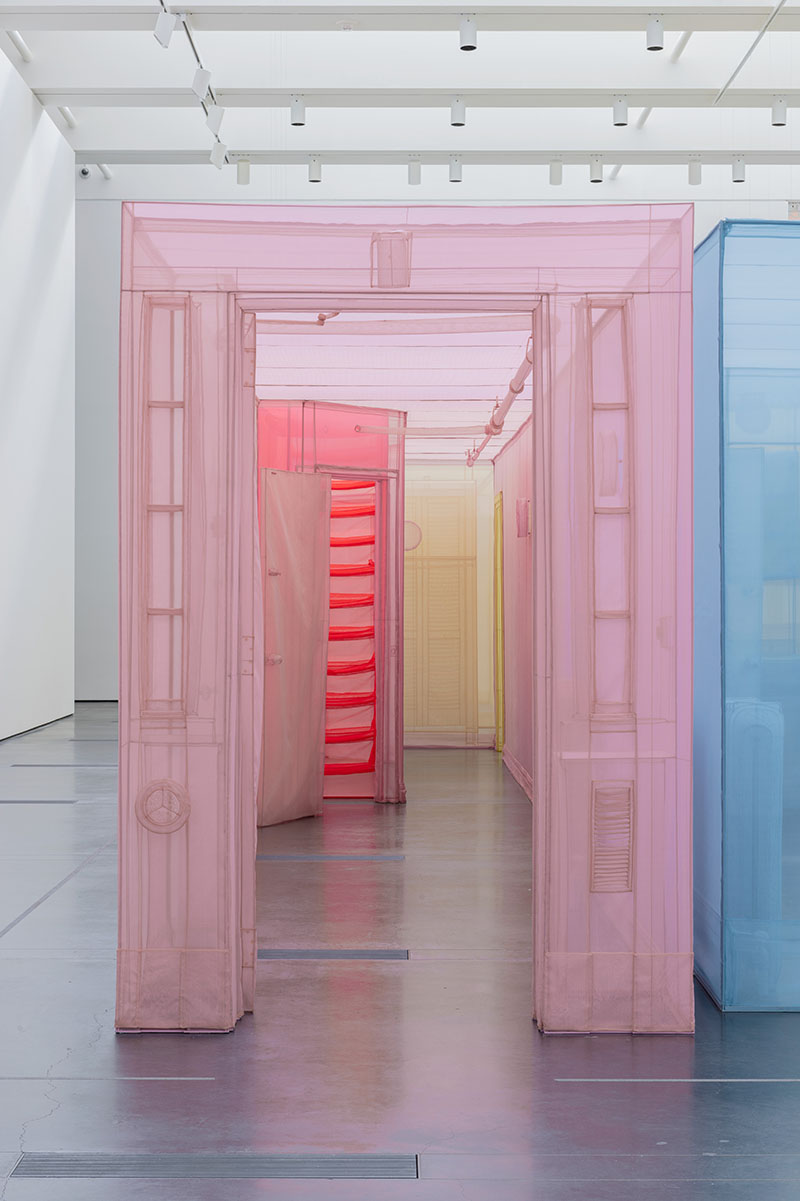Well known for creating full-size replicas of his dwelling spaces, South Korean artist Do Ho Suh has “moved in” at the Los Angeles County Museum of Art’s Resnick Pavilion. The installation, 348 West 22nd Street, is both ephemeral and immersive, a seemingly delicate re-creation of a former residence of the artist located in New York City’s Chelsea district.
Created from polyester fabric and stainless steel tubes, the installation appears as delicate and transient as a butterfly’s wing, a dreamlike evocation of living space that is almost transparent and yet almost magically fully realized. There are light switches, a fuse box, sinks, a toilet, tub and shower—down to the curve of bathroom tiles, oven, air conditioner unit, stairs. The colors vary by room: muted blues and grays, gold, pink; the stairs stand out as a vibrant red. The installation encompasses two apartment units, a hall and staircase. It is so detailed that one can read the controls on the oven and fuse box.

Do Ho Suh, 348 West 22nd Street, Apartment A, Unit-2, Corridor and Staircase (detail), 2011–15, Los Angeles County Museum of Art, anonymous gift, installation view, photo © Museum Associates/LACMA
Viewers must wait in line to enter, and only ten were allowed into the installation at a time during our visit. While waiting, staff members allowed viewers to touch samples of the thin but remarkably resilient fabric the installation is created from. The intimacy of the experience allows one to walk the linked rooms with a sense of reverence, to have the necessary moments to see the exquisite detail, and most of all to experience the sensation of visiting the ghost of a location, a memory.
Suh’s works often refer to a physicalizing of memory, and this installation, a recent gift to LACMA, evokes not just the artist’s memories, but that of each viewer. Who has not recalled a location they once lived in and the emotions felt there—the joy of childhood, the passion of a first relationship, the anger of a bad marriage, perhaps—still quite visceral.
Both the precision of detail and the translucent quality of the material in Suh’s work suggest the viewer is entering a special place, a realm in which something eternal exists, neither completely corporeal nor merely imagined, but a fusion of both. This fusion connects to Suh’s act of creating the installation, which involves a combination of traditional Korean sewing techniques with digital modeling tools to shape the massive sculptural work.
The artist uses translucent polyester thread and wiring as well as steel frames to create his work. The varied colors used help separate the rooms, while the attention to detail creates a vivid embroidery of life itself.
Both ghostly and grand, 348 West 22nd Street is one of a series of full-scale recreations of Suh’s past homes, each created with delicate materials and graceful gravitas. Stepping into his installation at LACMA is a visit to the places in the heart in which we all reside, if only in our dreams.


